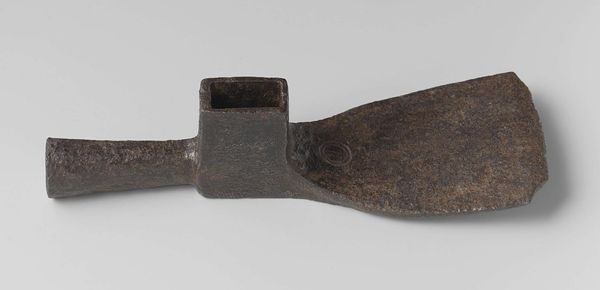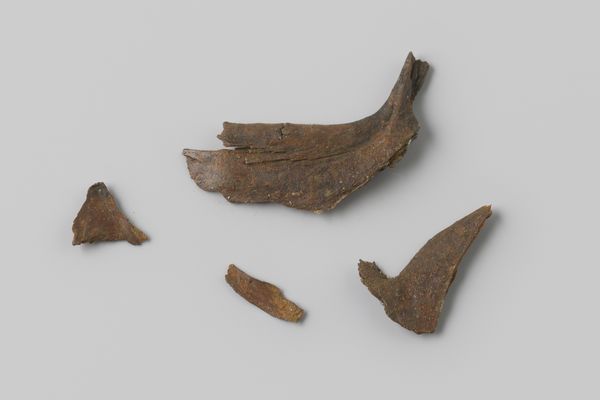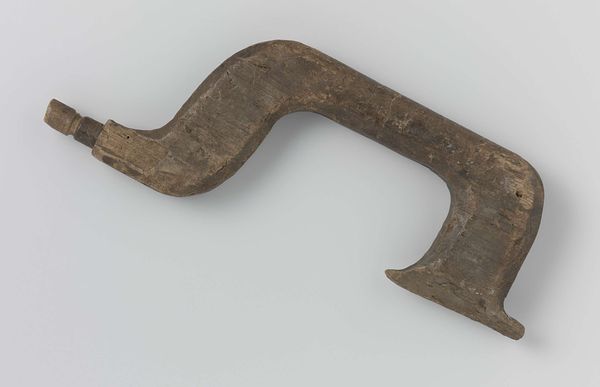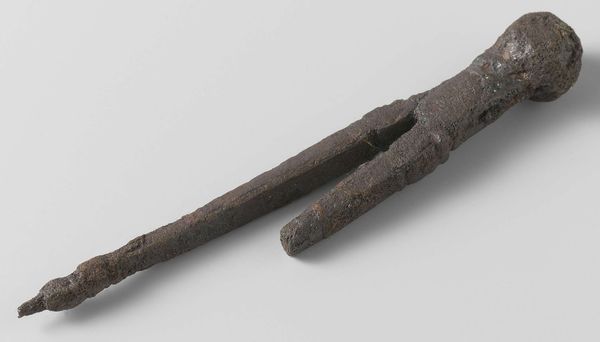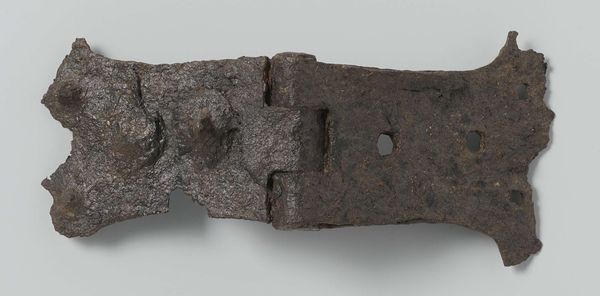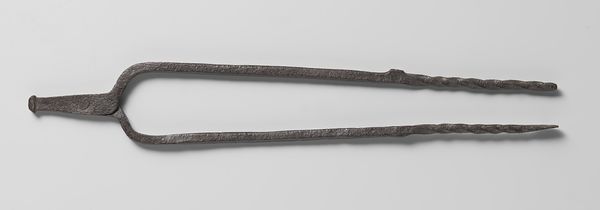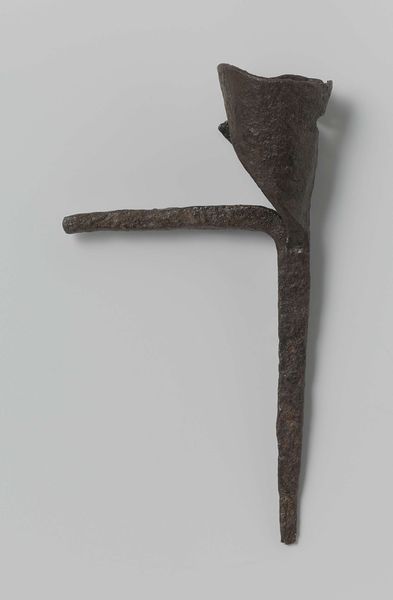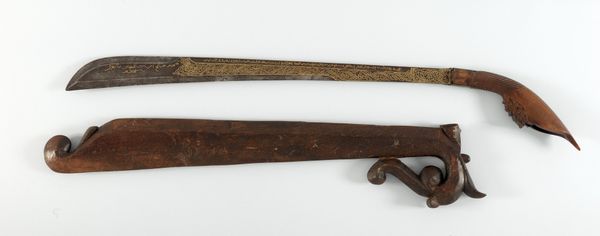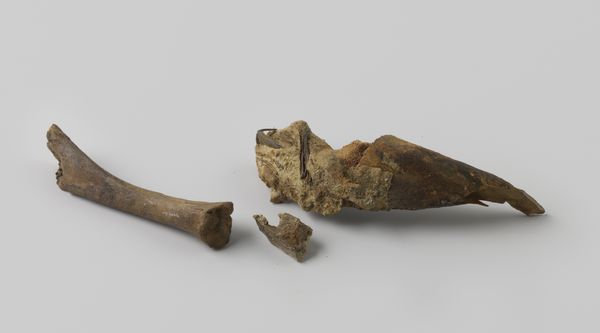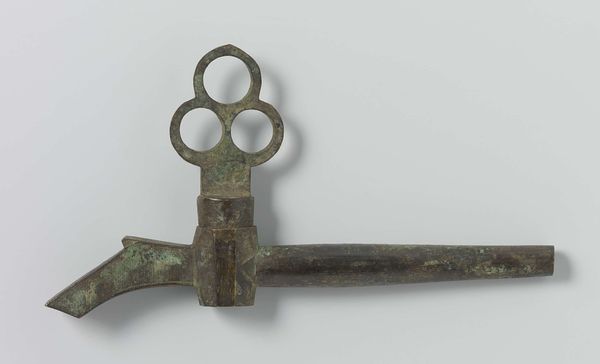
Dimensions: length 11 cm, width 9 cm, length 4.4 cm, width 4.4 cm, length 4.1 cm, width 3.1 cm
Copyright: Rijks Museum: Open Domain
Editor: Right now, we're looking at a piece titled "Drie stukken ijzer", or "Three Pieces of Iron", made in 1831 by an anonymous artist. It's an assemblage made from metal, and feels almost… accidental? Like a still life of discarded materials. What catches your eye in this work? Curator: It’s the quiet poetry of rust, isn’t it? The transformation of something strong into something…vulnerable. I find myself wondering where these pieces originated. Were they once part of something larger, something functional? Now, they exist only as themselves, remnants of a forgotten purpose. It reminds me of how memory functions, fragmented and weathered by time. Does it make you think about history, or perhaps the impermanence of things? Editor: Definitely impermanence. They look so fragile, almost like they could crumble if you touched them. But "poetry of rust"—I love that! I hadn't thought of it that way, but it shifts how I see them completely. So, even in discarded objects, we can find artistic intent? Curator: Intent, perhaps, is less the point. Maybe it’s more about invitation. An invitation to see beauty in the unexpected, to find significance in the mundane. Each pit and ridge tells a story, wouldn’t you say? The history isn’t in the form, but in what has changed it, the marks of exposure and erosion… it feels so very human to me. Editor: I see that now. I came in thinking these were just three pieces of metal, but they hold so much more. Curator: Exactly. And isn't it fascinating how something so simple can trigger such complex emotions? It's as if the iron itself whispers secrets of resilience and decay. What a thought, don’t you think?
Comments
No comments
Be the first to comment and join the conversation on the ultimate creative platform.
